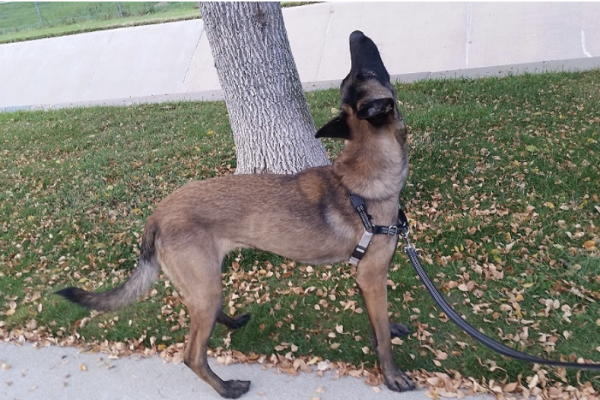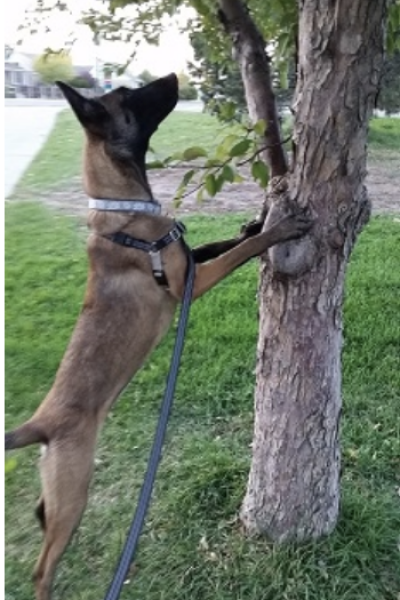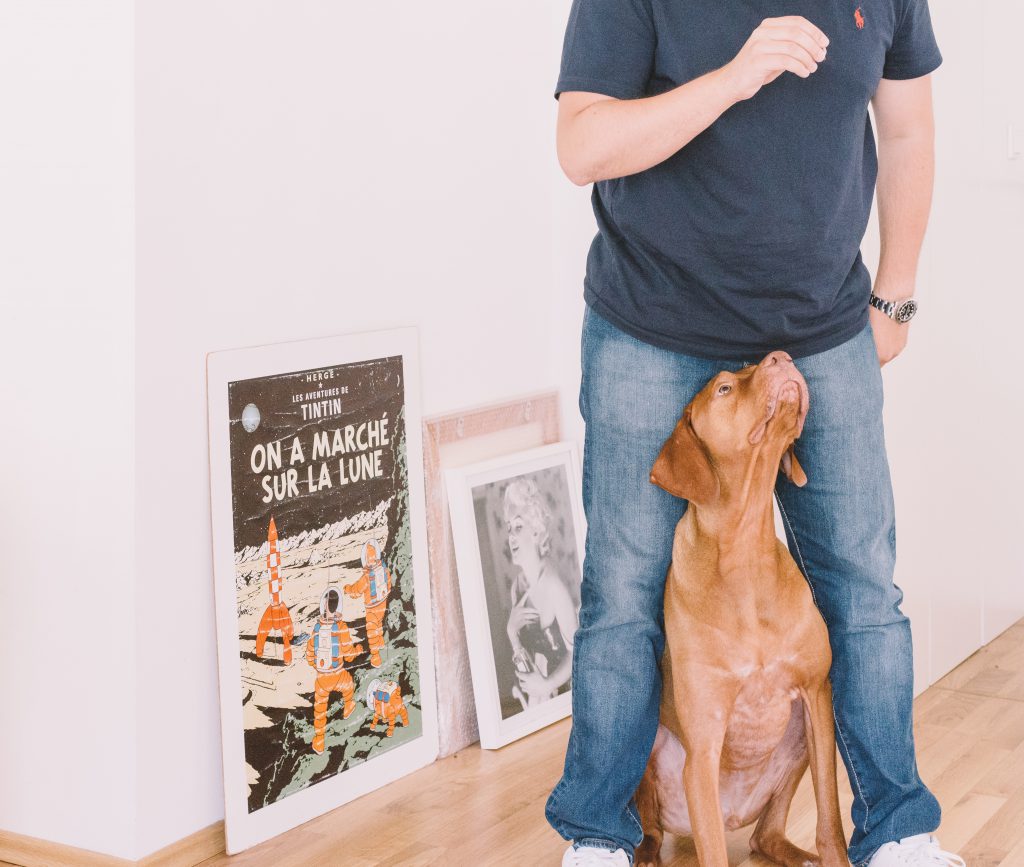The situation: Your dog hears something outside and runs barking at the window or at the fence, or maybe your dog sees another dog and simply freezes in position before he lunges.
You: Anxious, nervous, feeling lost, or freezing for a second or more.
The result: Usually, by the time we intervene, it’s too late. Your dog has been barking at the window for a while now while you were trying to call his name, without success. Or, maybe he has already approached the other dog and scared him off, which teaches your dog that barking and lunging works to keep other dogs away…
What could you do differently? Have a game plan and take action! Recognize the changes in your dog’s body language and call him before he reaches threshold. The goal is for your dog to turn his head to you and run back in your direction. The more that you interrupt your dog while he’s engaging in an undesired behavior, and reward him for his great choice of withdrawing from whatever it was and coming to you, the quicker he will respond to you the next time you try to grab his attention. This is REDIRECTING.
Why does redirecting work? Let’s face it, redirection works for us as human beings too. If we are having a bad day and someone reaches out to us to help, it brightens our day. If we think about something we think we failed at and then someone gives us a compliment, we snap out of our thought pattern. That’s it! We redirect our attention to the more positive emotion. Your dog will do the same. If we are able to sidetrack him, he will let go of what he has been used to doing and come to us.
You might think, “there is no way my dog is going to ignore that other dog behind the fence and just continue to walk calmly by” or, “there’s no way my dog will hear the mailman dropping envelopes through the mail slot and not go nuts, running and barking at the door”…. So here is the key: practice makes perfect! It might take you longer to call him to you the first time. You might even need to go to him and lure him to yo, but this is part of the training. In some cases, you might need to set the scenario in a controlled fashion so it’s less difficult for your dog to leave everything and come to you. For example, you can have a friend walk up to the door and push an envelope through the mail slot. Slowly you can work it up to more difficult scenarios, like loud knocking, or multiple people. When your dog comes to you, praise and reward him for coming and release him to do whatever he wants. The next time he might come faster and with less effort from your side.
By being consistent in redirecting, you can help your dog to create new habits. Dogs create certain habits by doing things they enjoy or do without interruption. If you sidetrack your dog regularly, those bad habits may start to dissolve. When you reward your dog for coming to you, you encourage your dog to make the preferred choice and make them more likely to let go of things in the future.
What is important when redirecting?
Have a pre thought plan: When we don’t have a plan it’s easy for us to feel lost and overwhelmed. We can find ourselves unsure about what to do and frozen as try and assess the situation under stress. It is good to have a ready, pre-thought plan. Not to say that all situations are the same, but it is possible to have a pre-thought-out solution that allows us to make in-the-moment decisions. There is something very powerful in being decisive: Your dog tends to follow you!
Our pre-thought plan could be: Once I recognized my dog is becoming fixated, I call my dog, say ‘let’s go’ and continue walking. Watch your dog from the corner of your eye and look for the moment he joins you without looking back, say, “Good boy!” to mark the moment. You definitely want your dog to know how much you are proud of him, as well as letting him know exactly what he did right. You could walk a few more steps to gain a little more distance from the distraction, ask your dog to sit (if possible) and give him a treat. Say, “Let’s go,” and continue walking.
Timing: Dogs can get very excited about something the longer they are focused on it. Different dogs have different behavior thresholds and some dogs can go from 0 to 60 in just a few seconds. For other dogs, the excitement builds more slowly. If you call your dog immediately when you observe the change in his or her body language, you have a better chance for them to leave the item they are obsessed with and come towards you (if you are at home) or continue walking with you (if you are out and about).
Let’s take a look at the following images. In what case do you think it will be easier to redirect the dog?
Image 1

Image 2

If you guessed that the situation on Image 1 would be easier- you’re right! The dog that jumps on the tree is much more interested in the squirrel than the same dog simply observing the squirrel while passing by. The dog from image 1 can easily take the position of the dog in image 2 if we will allow her continue staring and not redirect her attention in time.
The beautiful thing about redirecting is that your dog has a choice. Rather than tugging on the leash and pulling him away, you call him and allow him to make a choice, which can be rewarded. You teach your dog to think and make good decisions on their own. This is priceless!
What to do when redirecting doesn’t work? If redirecting doesn’t work, there could be few reasons behind it:
- Your dog is way above his behavior threshold. He might not be able to deal with such a high distraction or temptation and might need to exercise being redirected in much less triggering environment.
- You tried to redirect your dog too late, either when the distraction is too close or your dog is already worked up.
One more thing to keep in mind: Last but not least, take a look into why your dog is behaving the way that he does. What are the reasons behind needing to be redirected in the first place. Is he anxious? Afraid? Bored? Does he need (more) space? Get agitated easily? Or is it simply a bad habit created by uninterrupted repetition? It is important to understand the root cause of the behavior and help your dog to overcome his challenges!
Happy redirecting!

